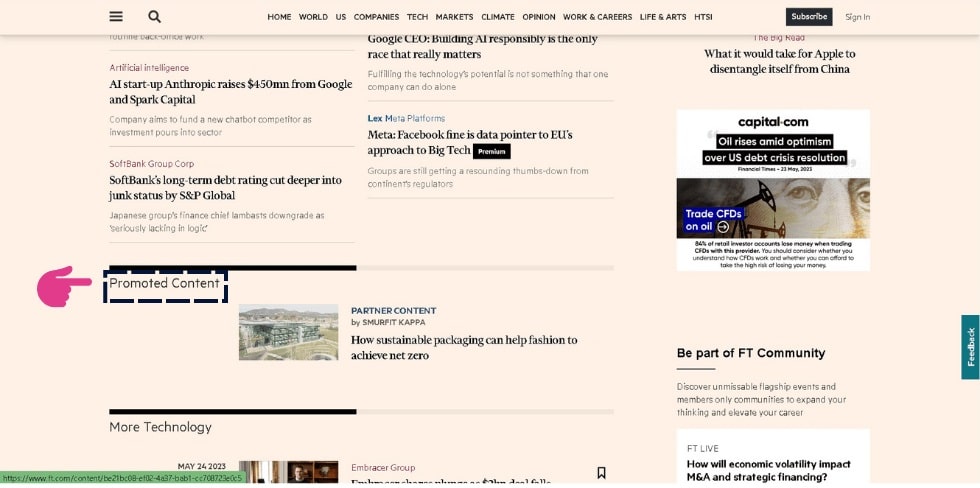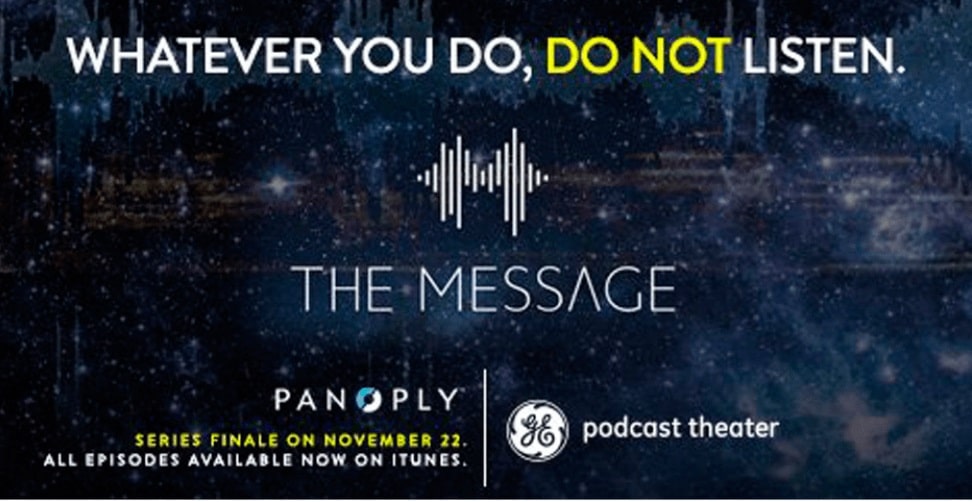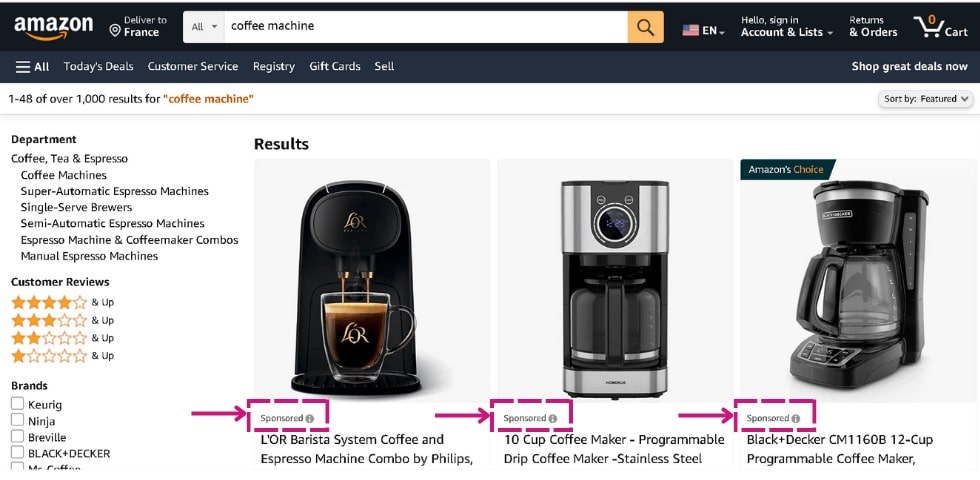In today’s digital landscape, where traditional advertising methods often struggle to capture and retain audience attention, native advertising has emerged as a powerful strategy for brands to connect with consumers more seamlessly and engagingly. In this blog article, we’ll explore the world of native advertising, its benefits, types, examples, and some considerations you should be aware of. So, let’s dive in!
What is Native Advertising
Native advertising is a form of online advertising that seamlessly blends into the platform where it appears, matching the form and function of the surrounding content. As you can see in the native advertising definition, unlike traditional banner ads or pop-ups, native ads aim to provide value to the audience by delivering relevant and engaging content that aligns with their interests.
Native advertising has become increasingly popular as it allows businesses to promote their products or services without disrupting the user experience, thus creating more effective campaigns that generate higher engagement rates among consumers.
5 things you should know about native ads
Before going any further, there are some key points that you should know so that you can use this powerful method with success.
1. Integration is Key
Native ads seamlessly integrate into the platform, matching its design, tone, and format. This integration allows them to be less disruptive and more likely to capture the audience’s attention.
2. Value-Driven Approach
Successful native ads focus on providing valuable content that educates, entertains, or informs the audience. By offering content that aligns with their interests, brands can build trust and credibility, fostering stronger relationships with their target consumers.
3. Disclosure and Transparency
Native ads should always be clearly labeled or disclosed as sponsored content. Honesty and transparency are vital to maintain trust with the audience and avoid misleading or deceptive practices.
4. Contextual Relevance
Native ads are effective when they match the context and interests of the platform’s users. Understanding the target audience and tailoring the content to resonate with them is crucial for success.
5. Measuring Success
Tracking and analyzing key performance indicators (KPIs) is essential in assessing the effectiveness of native advertising campaigns. Metrics such as click-through rates, engagement, and conversions can provide valuable insights into the impact of native ads.
Benefits of native advertising
Native advertising brings a multitude of benefits to the table, making it an enticing marketing approach for businesses. Let’s explore some key advantages that make native advertising stand out from traditional advertising methods:
Seamless integration
Native ads seamlessly blend into the user experience, appearing as natural content within the platform. For example, a sponsored article on a news website that shares valuable insights about a brand’s industry without being overly promotional.
Increased engagement
By aligning with the platform’s style and format, native ads attract higher engagement rates. For instance, an in-feed ad on a social media platform appears as a regular post, encouraging users to interact and share their opinions.
Targeted reach
Native advertising enables brands to precisely target their desired audience based on specific demographics, interests, or browsing behavior. For instance, a recommendation widget on an e-commerce site suggests related products based on a user’s previous purchases.
Enhanced credibility and trust
Well-executed native ads, provide value to the audience through informative or entertaining content, establishing trust and credibility with the brand. For example, a sponsored video on a cooking website showcasing a chef using a specific brand’s ingredients in a delicious recipe.
Non-disruptive user experience
Native ads seamlessly integrate into the user’s online journey, avoiding interruptions and creating a positive user experience. For instance, a promoted listing on an e-commerce platform appears alongside organic search results, enhancing product discovery without causing a disruptive browsing experience.
These benefits collectively make native advertising an effective and appealing choice for brands, allowing them to connect with their target audience in a meaningful and engaging way while maintaining a harmonious user experience.
5 Native advertising examples
There is no better way to understand native advertising and how it works than learning from real practical examples. Let’s explore a few real-world examples of native advertising:
Google Ads
Google Ads serves as a prime example of a native advertisement within the digital landscape. With its extensive reach and integration across various platforms, Google Ads seamlessly blends sponsored content into search engine results, websites, and mobile apps.
By matching the appearance and format of organic search results or webpage content, Google Ads ensures a cohesive user experience while effectively promoting relevant products or services.

Financial Times promoted content
Financial Times (FT) promoted content stands as a compelling example of native advertisement. With its vast readership and reputation for delivering in-depth financial news and analysis, FT seamlessly integrates sponsored content within its platform. These articles, clearly labeled as promoted or sponsored, provide valuable insights and thought leadership from relevant industry experts and brands.
By maintaining the same editorial standards and high-quality content as regular articles, FT’s promoted content engages readers while subtly promoting the featured brands. This native advertising approach allows brands to leverage FT’s credibility and reach a highly targeted audience of finance and business professionals. The seamless integration of sponsored content within the FT platform ensures a non-disruptive user experience and fosters trust between the readers, the publication, and the brands involved.

The message podcast of GE
“The Message” was a narrative fiction podcast produced by Panoply and sponsored by GE. It was released in 2015 and consisted of an eight-episode series.”The Message” podcast is an excellent example of a successful native advertisement. With its captivating narrative and high production quality, the podcast managed to engage audiences while subtly incorporating GE’s brand presence.
By immersing listeners in a thrilling science fiction storyline centered around cryptographers decoding a mysterious extraterrestrial message, the podcast effectively held the attention of its audience throughout the series

Coca-Cola in the Stranger Things series
When you witness the character “Eleven” from the popular series “Stranger Things” crushing a soda can, it’s not by chance that the brand featured is Coca-Cola. This deliberate choice is part of a marketing tactic called Product Placement, which is one of the methods of Native advertising. In several episodes, characters are seen enjoying Coca-Cola beverages, seamlessly integrating the brand into the storyline and 1980s setting.
The nostalgic appeal of “Stranger Things” combined with Coca-Cola’s iconic status creates a powerful association between the brand and feelings of nostalgia and enjoyment. By organically featuring Coca-Cola in the show, the brand effectively reaches a wide audience while enhancing the authenticity and immersive experience of the series. It is a great example of how beneficial native advertising can be if used properly.

You can see more examples of product placement in the “Know everything about Product Placement” article.
Social Media Ads
As you scroll through your Facebook feed, an enticing image catches your eye. It shows a beautifully plated dish, showcasing a colorful array of fresh ingredients of the “chef’s choice” dish. By seamlessly blending into the Instagram feed and presenting an enticing image, this native ad effectively captures the attention of users, drives interest in the restaurant, and encourages social engagement.

Types of Native Ads
When it comes to native advertising, the realm of creativity knows no bounds. While the possibilities are vast, it’s helpful to have a list of categorized native advertising methods to guide our exploration. By identifying and understanding the different types of native ads, we can uncover the diverse strategies and formats that contribute to successful native advertising campaigns.
Paid-search ads
Paid ads are seamlessly integrated into search engine result pages (SERPs) in a manner that closely resembles organic results. While the extent to which they adhere to the definition of native advertising may be a subject of debate, these ads do blend in with organic results and align with user intent. They are distinctly labeled with a ‘sponsored’ or ‘ad’ icon, similar to other sponsored native content. Unlike traditional banners, these ads are triggered by specific keywords, and advertisers are only charged when someone clicks on them. This makes search ads a highly effective and efficient method for reaching target audiences and driving website traffic.
Product placement
Product placement is a type of native advertising that seamlessly integrates branded products or services into the content of movies, TV shows, or other forms of media. Rather than interrupting the viewer’s experience with overt advertising, product placement strategically places products within the storyline, enhancing authenticity and immersion. This form of native advertising allows brands to gain exposure and generate brand recognition by associating themselves with popular entertainment content. By integrating products organically into the narrative, product placement offers a non-disruptive and effective way for brands to reach their target audience while enhancing the overall viewing experience.
This is a powerful tool that can provide a high return on investment. You need to read the “Know everything about Product Placement” article to understand it completely.
Sponsored content
Sponsored content is a method of native advertising where brands collaborate with publishers to create engaging and informative content that aligns with the publisher’s platform and audience. This content is designed to provide value to the readers while subtly promoting the brand’s products, services, or message. By blending seamlessly into the platform and adopting the same style and format as the surrounding content, sponsored content enhances the user experience while effectively reaching and engaging the target audience. This can take the form of articles, blog posts, opinion pieces, videos, podcasts, infographics, or anything else that resembles the platform’s editorial content.
In-feed ads
In-feed ads, as the name implies, are ads that appear within a user’s feed, whether it’s on their social media accounts or news feed. Designed to be less intrusive and more captivating than traditional paid ads, they seamlessly blend into the user’s browsing experience.
Social media ads or “Google Discovery” are two examples of the application of this method.
Recommendation widgets
Appearing alongside regular website content, recommendation widgets enhance the online experience by suggesting products or relevant sponsored content to the audience. These widgets are especially effective for remarketing and retargeting campaigns, enabling brands to deliver compelling messages and efficient upselling to users who have previously engaged with their brand. By collecting visitor data and leveraging it to optimize recommendations, these widgets continually improve themselves, ensuring the delivery of accurate and relevant suggestions to users.
You can read more about Remarketing in the “Remarketing vs Retargeting: a complete guide, definition with examples” article.
Promoted listings
Promoted listings, known as “Sponsored Products” on Amazon and “Promoted Listings” on eBay, are native advertising methods that allow sellers to boost the visibility of their products within the respective e-commerce platforms. These sponsored listings appear alongside regular search results, seamlessly integrating with the user’s browsing experience. By paying for increased visibility, sellers can effectively reach their target audience, increase product visibility, and drive sales. Promoted listings enable sellers to strategically promote their products within the platform while maintaining a cohesive and non-disruptive shopping experience for users.

Native advertising vs sponsored content
Native advertising and sponsored content are often used interchangeably, but they have distinct differences. Native advertising encompasses a range of paid media integrated into the publisher’s platform, and sponsored content is a component within this broader concept.
Alongside sponsored content, native advertising includes forms like in-feed ads and recommendation widgets. Recognizing the connection between sponsored content and native advertising aids brands in selecting the most fitting strategy to achieve their marketing goals.
You can read more about the difference between native advertising in the “Sponsored Content: an ultimate guide with Examples” article.
Regulations and rules
Regulations surrounding native advertising vary across jurisdictions, and brands; publishers need to adhere to local guidelines. Regulations often focus on ensuring clear disclosure, avoiding deceptive practices, and protecting consumer rights. Familiarize yourself with the regulations applicable to your region and ensure compliance.
In order to ensure that native advertising is conducted in an ethical and transparent manner, businesses should follow some regulations set forth by the Federal Trade Commission (FTC) as outlined in their Native Advertising Playbook. It is important for companies to make sure they are familiar with these guidelines so that they can employ practices that follow FTC rules while still maximizing the effectiveness of their campaigns.
One key point of the Native Advertising Playbook stipulates that consumers must be able to clearly identify sponsored content as such from surrounding non-promotional material. To do this, advertisers should use language such as “Ad” or “Advertisement” at the beginning or end of any sponsored content—so viewers know it has been paid for and isn’t just regular web page information like images audio clips, etc… This will help ensure transparency throughout process prevent any potential confusion among readers who may not have realized what was being advertised before clicking on link take them away original website altogether thus increasing overall trustworthiness your business’s offerings same time!
Key insights
- Native advertising is a form of online advertising that seamlessly blends into the platform where it appears, matching the form and function of the surrounding content, aiming to provide value to the audience while promoting products or services.
- The value-driven approach of native ads, providing valuable content that aligns with the audience’s interests, helps build trust and credibility for the brand.
- Clear disclosure and transparency are crucial in native advertising to maintain trust with the audience and avoid misleading practices.
- Contextual relevance is key to the success of native ads, as they need to match the context and interests of the platform’s users.
- The benefits of native advertising include seamless integration, increased engagement, targeted reach, enhanced credibility and trust, and a non-disruptive user experience.
- Real-world examples, such as Google Ads, Financial Times promoted content, “The Message” podcast of GE, Coca-Cola in “Stranger Things,” and social media ads, demonstrate the effectiveness and versatility of native advertising.
- Different types of native ads, including paid-search ads, product placement, sponsored content, in-feed ads, recommendation widgets, and promoted listings, offer diverse strategies and formats for successful native advertising campaigns.
- Adhering to regulations and guidelines, such as those outlined by the Federal Trade Commission (FTC), ensures ethical and transparent native advertising practices while maintaining compliance with local regulations.
image credit: freepik
via https://www.aiupnow.com
Seyed Morteza Mortazavi, Khareem Sudlow
